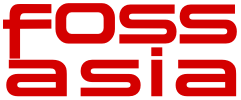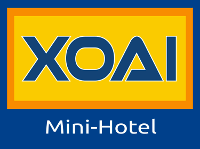Location
Ho-Chi-Minh-City (Saigon)
Ho Chi Minh City (Saigon) (Vietnamese: Thành phố Hồ Chí Minh Thanh Pho Ho Chi Minh) is the largest city in Vietnam. It was known as Prey Nokor before being annexed by the Vietnamese in the 17th century. Under the name Saigon, it was the capital of the French colony of Cochinchina and later of the independent state of South Vietnam from 1954 to 1975. In 1976, Saigon merged with the surrounding province of Gia Định and was officially renamed Hồ Chí Minh City (although the name Sài Gòn – formally known as District 1 – is still commonly used.)
Saigon Ho Chi Minh City’s Downtown at night
The city center is situated on the banks of the Saigon River, 60 kilometers (37 mi) from the South China Sea and 1,760 kilometers (1,094 mi) south of Hanoi, the capital of Vietnam. The metropolitan area, which consists of Hồ Chí Minh City metro area, Thủ Dầu Một, Di An, Bien Hoa and surrounding towns, is populated by more than 9 million people, making it the most populous metropolitan area in Vietnam and Indochina. The Greater Ho Chi Minh City Metropolitan Area, a metropolitan area covering most parts of Dong Nam Bo plus Tien Giang and Long An provinces under planning will have an area of 30,000 square kilometers with a population of 20 million inhabitants by 2020.
Geography and Climate
Ho Chi Minh City is located at 10°45′N, 106°40′E in the southeastern region of Vietnam. The average elevation is 19 meters (63 ft) above sea level. The city covers an area of 2,095 km² (809 sq mi) (0.63% of the surface of Vietnam). The city has a tropical climate, with an average humidity of 75%. A year is divided into two distinct seasons. The rainy season, with an average rainfall of about 1,800 millimetres (71 in) annually (about 150 rainy days per year), usually begins in May and ends in late November. The dry season lasts from December to April. The average temperature is 28 °C (82 °F), the highest temperature sometimes reaches 39 °C (102 °F) around noon in late April, while the lowest may fall below 16 °C (61 °F) in the early mornings of late December.
| Weather data for Ho Chi Minh City | |||||||||||||
|---|---|---|---|---|---|---|---|---|---|---|---|---|---|
| Month | Jan | Feb | Mar | Apr | May | Jun | Jul | Aug | Sep | Oct | Nov | Dec | |
| Average high °C (°F) | 32 (90) | 33 (91) | 34 (93) | 34 (93) | 33 (91) | 32 (90) | 31 (88) | 32 (90) | 31 (88) | 31 (88) | 30 (86) | 31 (88) | |
| Average low °C (°F) | 21 (70) | 22 (72) | 23 (73) | 24 (75) | 25 (77) | 24 (75) | 25 (77) | 24 (75) | 23 (73) | 23 (73) | 22 (72) | 22 (72) | |
| Precipitation mm (inches) | 14 (0.55) | 4 (0.16) | 12 (0.47) | 42 (1.65) | 220 (8.66) | 331 (13.03) | 313 (12.32) | 267 (10.51) | 334 (13.15) | 268 (10.55) | 115 (4.53) | 56 (2.2) | |
| Source: Embassy of Vietnam, London 2008-02-26 | |||||||||||||
Get in by plane
Tan Son Nhat (Tân Sơn Nhất) is Vietnam’s largest international airport. There are two terminals: The new international terminal, and a terminal, reserved for domestic flights.
Airport Bus is the Bus No. 152, the most cost-efficient way into the city. It will drop you off on the west side of the Pham Ngu Lao area, or at the bus terminal on the south side of the Ben Thanh Market roundabout. The price is 3,000 dong. Upon exiting the airport, turn right and walk towards the domestic airport, about 5 minutes walk, in front of the airport across a small road you will see the bus waiting there.
Taxi (TSN airport uses a Taxi queue system usually at the left end of the terminal) – Look for the taxi warden usually standing around the queue line (Mai Linh wardens are in green shirt green tie, Vinasun warden are in dark green shirt maroon tie), they will radio the taxi for you. It will cost about 10 USD to district 1. Taxis from the airport to the city center would usually take as little as 15 minutes in lighter traffic (which only happens between 9:00-11:00AM and 2:00-4:00PM). This should cost no more than 90,000VND. The more typical experience is to creep along in near-standstill traffic for 30 minutes or more, at a cost of about 120,000VND to 150,000VND from district 1, inclusive of airport tax.Taxis to go from the Airport to Ben Thanh Market cost about 75,000VND. A company called Sasco has the airport taxi concession, and their cars are the first you will see by the curb. The rivals such as Vinasun and Mai Linh, which can be found waiting in abundance 50 meters away, further out into the parking lot. Whichever taxi you choose, make sure the driver uses the meter.
Departure / Leaving Sai Gon When you are going to the airport, be specific which terminal you want to go to. International flights go from the newer international terminal (go straight); Domestic flights (to Hanoi, Danang, Nha Trang, etc) are from domestic terminal (turn left). When entering the airport, taxi drivers will add the entry fee to your total meter. This is for the airport entry fee (5000 VND).
Transportation
Tan Son Nhat International Airport, a joint civilian and military airport, is located 4 mi (6 km) north of the city center (District 1). Ho Chi Minh city’s road system is in improvable condition. Many of its streets are riddled with potholes. Recently, the number of motorcycles has increased to about 4 million. There are also over 500,000 automobiles, packing the city’s arterial roads and making traffic congestion and air pollution common problems. While Beijing used to be called “the City of Bicycles”, Ho Chi Minh City is “the Capital of Motorbikes”. Motorcycle-taxi (xe ôm) is a popular means of transport; foreigners are often greeted with the cry, “Motorbike!” Visitors should consider the city’s streets as dangerous due to the motorists’ lack of behavior and the city’s lack of traffic law enforcement. Drivers can be seen driving the wrong way up one-way streets, ignoring red lights, not stopping for pedestrians on marked crossings and driving on the footpaths. From 2008, this has improved somewhat, with more traffic lights, greater adherence to traffic light signals, and motorcycle helmets being worn. The city is the terminal hub of the North South Railroad of Vietnam. Passengers can travel to Hanoi and the Chinese border, about 1,212 mi/1,950 km to the north. There are many harbours along the Saigon and Dong Nai Rivers. From Ho Chi Minh City, one can travel to many places in Southern Vietnam and to Cambodia by road or waterway. The city is linked to the Central Highlands by National Highways 14 and 20, to the Central Coast and the north by National Highway 1 and to the Mekong River Delta by National Highways 1 and 50. Two expressways are being built to connect the city to Can Tho, the capital of the Mekong River Delta, and to Dau Giay Township, Dong Nai Province, 70 km to the northeast.
By taxi
Taxis are the most comfortable way of getting around, and not too expensive – about 12,000 dong for the first 1km, plus 10,000 dong per additional km. (Prices jumped about 30% at the start of 2008, and again in July 2008 due to the soaring price of fuel but have since been reduced.) It’s usually not hard to flag a taxi anywhere in the central city, though finding an available one in the rain or during peak hours can be difficult. Possible annoyance: when using the meter some taxi drivers slow down on purpose to increase the price. Taxi rates are not regulated by the city government, and each company sets its own fare structure, which changes from time to time. The market is fairly competitive, however, and the major companies all reasonably honest with similar rates. Carry small change and bills for paying fares, since drivers are often short of change. Taxi models in service range from the tiny Daewoo Matiz to big Toyota Innova minivans. Newer cars are more likely to have working air-con; larger mini-SUV-type models sometimes charge a higher rate. When using a metered taxi be aware of the taxi slowing down on purpose to increase the bill.
Rental Car
For trips outside of the city or for the convenience of having a private vehicle for the day, daily car hire with driver is a good option. Many of the taxi companies such as Mai Linh and Vinasun offer these services. For a little more money, Budget Car Rental, the American car rental company, offers English speaking drivers who serve as tour guides and to take you around the city or to sites such as Cu Chi. To avoid the fuss in waiting time for car rental at the airport after taking a long flight, SATS Car Rent will meet pax’s expectation. Please contact the ‘’Information Service Counter’’ located at police Immigration stamping visa section. Staff will welcome and process the payment then escort you to the parking lot just outside the arrival terminal.
By motorbike
Motorbike taxis (xe ôm, literally hug-vehicle) are plentiful (get used to hearing “you want moto!?” everywhere), cheap, and are generally quite safe. As of December 15th, 2007 all riders in Vietnam are now required to wear helmets and this is strongly enforced. As such, the driver should supply you with a helmet. If he doesn’t – find another one, as you’ll be the one stung for the fine. Absolutely agree on a price before you set off; short hops around town shouldn’t be more than 10000 dong, and all the way to the airport around 30000. Rule of thumb for the price will be nearest round up of half the cost of taxi ride for the same travel. Drivers are generally quite friendly and will go slower if requested. They’re also not adverse to a bear hug if you’re really struggling. Many of the moto drivers, especially in district 1 speak some English, and like many Vietnamese will repay you in a flood of smiles (and probably point out all the sights) if you make a little effort to get to know them. You can rent your own motorbike in many places, especially around the backpacker area (Pham Ngu Lao) in District 1. Prices range from US$3-7/day; US$4 should get you a solid 100-110cc bike. Driving in Saigon is best left to experienced drivers, however – the traffic is intense, and has its own rhythms and logic. Drivers with limited experience should consider renting an automatic bike (usually a bit more expensive), as at busy crossroads there is not time for worrying about how to change gears. Beware of thieves: always keep your motorbike in sight or parked with an attendant. Most restaurants have guard / parking attendants out front who will issue you a numbered tag and take care of your motorbike. Independent parking lots are scattered around the sidewalks, alleys, and basements of the city – look for rows of neatly-parked motorbikes or signs that say giu xe. Prices range from free at some restaurants (though a small tip is common) to 5000 dong (~.30 US cents) at upscale night clubs.
By cyclo
A cyclo ride through downtown Saigon is a great way to see the city the way the locals do. The sights, sounds, and smells are a large part of the excitement of the city, and are best experienced from the relaxed pace of a cyclo. A word of warning: be careful with cameras, purses and watches while cyclo riding as these items are easily stolen by motorbike riders. For many reasons, not least because of government attempts to restrict cyclos on busy urban streets, cyclos are disappearing. At around US$2/hour and because they are so slow, they can be a good choice for taking in the city. Be sure to bargain hard with the cyclo rider beforehand. Some cyclo riders have been known to attempt to change the agreed price after your journey has finished, whilst another trick may include the driver visiting places which benefit his wallet. To avoid these problems, make sure you are clear on the price and destination upon departing.
By bus
Look for the bright green buses with 150+ routes (Aug 2008) – maps of the bus system can be picked up across from Ben Thanh Market – just go into the waiting room to the desk in the middle. Cheap, safe and not too crowded either but only if you can find the right line. If you cannot find your way, ask the locals nicely, they will try their best to help. A piece of paper and marker pen may help to ease the conversation. Cheaper 2,000 – 4,000 dong and safer than many of the alternatives.

City buses in Ho Chi Minh City. Usual fare is 3000 Vietnamese đồng.
On foot
Traffic is made up of a staggering number of motorbikes and, since import duty was reduced upon Vietnam’s joining of the WTO, an increasing number of private cars. However its exceptionally rare to see a motorbike of more than 150cc, and the traffic rarely gets above 20-30km/h in central areas. However crossing the road in Saigon can be a nightmare. The first time may be a little scary, after that you will get used to it quite quickly. If ever in doubt, Saigon’s “Tourist Security” officers (guys in marked green uniforms) will happily help you across. A quicker way of getting across is to simply follow the lead of a local crossing the street. However the true trick to crossing the road is to stay aware, and walk slowly and confidently. The motorbike riders are actually exceptionally good and will simply move to avoid you – just don’t make any sudden lurches forwards, backwards, or stop for that matter! Just look for a gap or seam in the traffic, and begin a slow but steady movement. If you hear a beep coming your way it’s likely a motorbike rider is about to enter your personal space. Be a alert and prepared to stop putting your foot forward until he passes. Adherence to traffic signals in Saigon is vastly improving, and while they’re not always followed, riders/drivers tend to use “best judgment”. Just remember though that vehicles can always turn right at any time (regardless of lights). Motorbikes often drive in the wrong direction (albeit quite safely and slowly) in unexpected places also. Crossing roads is therefore a challenge for Westerners used to traffic laws and traffic lights. The streets, sidewalks, and outdoor markets are covered by motorbikes, and not yet geared towards pedestrian traffic (although sidewalk clearing campaigns are now underway- many areas of the center are easy to negotiate as long as you keep your wits about you for speeding motorbikes). However walking along the edge of the road is easy enough. Any motorbikes behind you will generally beep at you to let you know they’re there.
Eat
You’re spoiled for choice in Saigon, which offers the country’s largest variety of Vietnamese and international food. Bargains are getting harder to find, however, and restaurant prices have been rising at up to 30% per year due to a combination of higher food prices, rising wages, and soaring real estate costs. Land in the city center now sells for around US$16,000 per square meter, so even a modest-sized restaurant sits on real estate worth more than US$1 million. Authentic local food at bargain prices is one of the glories of Vietnam, it’s still possible to find it in many places in Saigon even though the city becomes ever more upscale and cosmopolitan.
Coffee shops
Vietnam is the worlds second largest exporter of coffee behind Brazil, and cà phê is very popular among the Vietnamese. It’s a paradise for coffee-loving visitors. The local style is strong and sweet; key words to remember are: sữa (sweetened condensed milk), đá (ice), and nóng (hot, pronounced “nowm”). Cà phê đá is strong, sweet iced coffee; and cà phê sữa đá is the same with condensed milk. Cà phê (sữa) nóng is brewed fresh on your table brewed in a little metal apparatus placed over a cup; just lift it off when it has cooled enough to touch (and hence drink). Prices range from 10,000 to 20,000 dong for coffee in the local style. Since ice might or might not be made with purified water, strictly cautious visitors should avoid it, though long-term residents consume ice from reputable cafes and restaurants all the time. Espresso, cappuccino, and American-style filter coffee are now also widely available in the tourist district, usually at twice the price of the local style.
Bars and clubs
Saigon has plenty of places to drink, although to a certain degree Vietnamese and foreigners hang out in different places; however this is slowly changing as Westerners become more familiar with the ways of the East (and vica versa). Places with live music usually have no cover charge, but impose somewhat elevated drink prices (typically 55,000 – 85,000 for beer, spirits, and cocktails.) Saigon is an early-to-bed town, and most places close at midnight in accordance with government-imposed restrictions. Some places remain open later (Go2 Bar in Pham Ngu Lao – popular with backpackers/budget crowd; Apocalypse Now on Thi Sach St – packed with people from all walks of life (you can find anything in this place regardless of your preferences (prostitutes straight/gay, drugs or just a place to dance the night away); ZanZBar on Dong Du St – will appeal to the “regular” bar crowd and closing time changes daily depending on the number of people in the bar). There are other late night clubs which cater almost exclusively to the young Vietnamese crowd.
Buy
Vietnamese arts and crafts, or mass-produced resin knock-offs thereof, are sold by dozens of shops around the central tourist district. The best, most expensive items can be mostly found on Dong Khoi or the immediate side streets. The goods tend to get progressively simpler and cheaper as you move west toward Ben Than Market (though the best wood-carving shop is a stall on the back side of Ben Thanh). A few shops have authentic woven silk textiles from Sapa and the north. Lacquered paintings, plates, bowls, etc. are quite striking and unique to Vietnam. Vietnamese propaganda posters can be very impressive and offer a taste of history. When buying keep in mind that is very useful to have local currency (Dong). Be advised that banks and formal exchange businesses will provide you with a decent rate, especially when compared with agencies like Statravel on the main Vui Ban street who will offer much lower rates.
Do
If the heat starts to get you down, there are several water parks where you can splash around to cool off. Visiting hair salons is also a must do for tourists, as Vietnamese are famous for it. Hair wash, manicure and pedicure cost no more than US$10. However, if the salon seems to be staffed exclusively by comely young ladies in tight dresses sitting on display at the window, they may offer more than just haircuts. If you’re in Saigon on a Sunday night, then beg, borrow, or rent a two-wheeled vehicle and join the throngs for di choi . It’s basically a party on wheels, where everyone just rides through the downtown streets until the wee hours.
Picture Gallery
Links
* http://wikitravel.org/en/Saigon
* http://en.wikipedia.org/wiki/Ho_Chi_Minh_City





















































